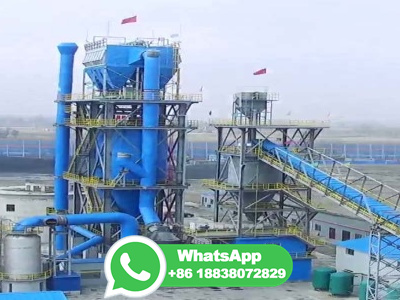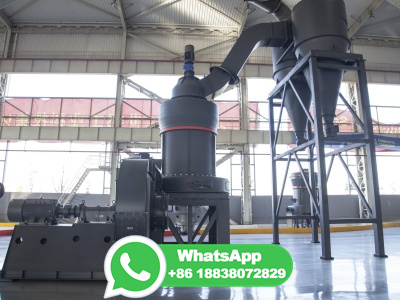
The Direct Method. This is perhaps the easiest way to make charcoal. The direct method is to make a fire in a container, then add wood to it. Once it is burning, you cover the container loosely with a metal sheet to restrict the air. Watch as white smoke and steam from the wood comes out of the gaps around the cover.
WhatsApp: +86 18037808511
Silicon metal is made from the reaction of silica (silicon dioxide, SiO2) and carbon materials like coke, coal and wood chips. Silica is typically received in the form of metallurgical grade gravel. This gravel is % silica, and is 3 x 1 or 6 x 1 in (8 x 3 cm or 15 x 3 cm) in size. ... The Manufacturing Process
WhatsApp: +86 18037808511
Current Charcoal Production . Much like the old process, the modern commercial charcoal process is to heat wood with little or no air present which takes special but simple equipment. In the United States, wood is the primary material used for charcoal and is generally procured in the form of residue from sawmills slabs and edgings. Sawmills love to find users of this material because of ...
WhatsApp: +86 18037808511
One can produce a tarlike substance from corn stalks by heating them in a microwave oven. This process is known as pyrolysis.. Tar is a dark brown or black viscous liquid of hydrocarbons and free carbon, obtained from a wide variety of organic materials through destructive can be produced from coal, wood, petroleum, or peat.. Mineral products resembling tar can be produced ...
WhatsApp: +86 18037808511
The production of charcoal involves the use of a variety of waste materials like rice husks, coconut shells, sawdust, wood, and bamboo, among others. There is further addition of sewage sludge, which gets mixed with either type of materials chosen. A charcoal manufacturing plant facilitates the whole process through different phases for the ...
WhatsApp: +86 18037808511
BRIQUETTING OF BIOMASS. KRISTOFERSON, V. BOKALDERS, in Renewable Energy Technologies, 1986 Bullockoperated machines. Briquetting machines, with dies and punches, driven by a single bullock, have been developed by the School of Applied Research in Maharashtra, India. They cost about US 2400 each. The machine is very sturdy but the problem is the limited maximum production 25 kg/hr and ...
WhatsApp: +86 18037808511
Planing: Smoothing the surface of each lumber piece and making its width and thickness uniform. Grading: The process of assessing the characteristics of each lumber piece in order to assign its "grade" (quality). The success of wood manufacturing rests on the mill's ability to retain the wood's quality throughout the manufacturing process.
WhatsApp: +86 18037808511
Researcher Patrick G. Hatcher wants to know how. "One problem with studying how wood converts to coal is that the reactions take place over an extremely long period," said Hatcher, who is an associate professor of fuel science and geosciences at Penn State.
WhatsApp: +86 18037808511
However, the industrial production of silicon requires a process temperature of 2,000 °C and the use of the natural raw materials quartz and coal. Thus, the production of silicon is resource and ...
WhatsApp: +86 18037808511
History The production of wood charcoal in locations where there is an abundance of wood dates back to ancient times. It generally begins with piling billets of wood on their ends to form a conical pile. Openings are left at the bottom to admit air, with a central shaft serving as a flue. The whole pile is covered with turf or moistened clay.
WhatsApp: +86 18037808511
While kerosene can be extracted from coal, oil shale, and wood, it is primarily derived from refined petroleum. Before electric lights became popular, kerosene was widely used in oil lamps and was one of the most important refinery products. ... The Manufacturing Process Crude oil recovery 1 The first step in the manufacture of kerosene is to ...
WhatsApp: +86 18037808511
A pencil is primarily made out of wood and graphite. The graphite is ground down and mixed with powdered clay and water to make a thick paste. This paste is then fired in a kiln. The result is a strong lead core that's difficult to break and extremely smooth for writing on paper. Rubber and aluminum are also part of a pencil's anatomy.
WhatsApp: +86 18037808511
The manufacturing process can involve sawing, planning, drilling, shaping, sanding, and finishing. The type of wood manufacturing process and product can vary greatly depending on the type of wood being used and the end product. Sawing Sawing is one of the most common forms of wood manufacturing.
WhatsApp: +86 18037808511
Activated carbon is produced from coconut shells, wood, coal and other carbonaceous sources. During the activation process, pure carbon is extracted from these materials by a superheating method known as pyrolysis. Throughout the manufacturing process, samples are collected at various stages and tested for quality in our labs.
WhatsApp: +86 18037808511
And then, it is the main part of the process for making charcoal: hightemperature pyrolysis, smoke discharge, sulphur removing and then carbon collection will occur successively. After all the above steps completed, the charcoal will be discharged from the powder discharge port. At the same time, the flue gas generated during the working ...
WhatsApp: +86 18037808511
Coal is a combustible black or brownishblack sedimentary rock, formed as rock strata called coal is mostly carbon with variable amounts of other elements, chiefly hydrogen, sulfur, oxygen, and nitrogen. Coal is a type of fossil fuel, formed when dead plant matter decays into peat and is converted into coal by the heat and pressure of deep burial over millions of years.
WhatsApp: +86 18037808511
A conceptual design of an industrial production plant for activated carbon was developed to process tons/day of industrial waste nutshells as the raw material and produce ton/day of activated carbon using steam as an activation agent. The design considered the cost of the main equipment, the purchase price of the nutshells, basic services, and operation. A sensitivity analysis was ...
WhatsApp: +86 18037808511
Home Why Us Process Activated carbon is produced from coconut shells, wood, coal and other carbonaceous sources. The process of activation is carried out in two stages. Read more...
WhatsApp: +86 18037808511
Although the importance of biomass briquettes as substitute fuel for wood, coal and lignite is well recognized, the numerous failures of briquetting machines in almost all ... engaged in manufacturing sawdust briquettes, known as 'Ogalite', amounting to a production of MTY. The fact that the production of briquettes quadrupled from ...
WhatsApp: +86 18037808511
M. Tod, in The Coal Handbook: Towards Cleaner Production: Coal Utilisation, 2013. Materials with ultrafine particle size. There has been considerable difficulty in the commercial use of a number of finegrain materials and coal tailings as fuels or sources of heat, due to their ultrafine particle size, heterogeneity and high water content.
WhatsApp: +86 18037808511
2. wood coal a carbonaceous material obtained by heating wood or other organic matter in the absence of air. charcoal. atomic number 6, carbon, C an abundant nonmetallic tetravalent element occurring in three allotropic forms: amorphous carbon and graphite and diamond; occurs in all organic compounds. fuel a substance that can be consumed ...
WhatsApp: +86 18037808511
To improve the utilization value of coal resources and optimize the production process of coalbased activated carbon, an L 9 (3 4) orthogonal experiment was designed to study the comprehensive effects of the carbonization temperature, heating rate, activation time and activator type on the specific surface area and iodine value of activated carbon prepared by physical activation, as well as ...
WhatsApp: +86 18037808511
Grinding. Grinding is also a size reduction step to make wood pellet, it is a necessary step for both large and small pellet plants. During the grinding process, the raw materials will be fed into a hammer mill which will grind the raw materials into smaller pieces with a diameter under the hammer mill can only process the wood raw materials with a diameter no mor than 50mm, therefore ...
WhatsApp: +86 18037808511
Most of the literature refers to the production of active carbons from coal, bamboo [7,8,9,10] and other lignocellulosic materials [11,12,13,14]. Activated carbon is the most widely used adsorbent because of its low cost, exceptionally high porosity, tuneable pore size and high adsorptive capacities [ 15, 16 ].
WhatsApp: +86 18037808511